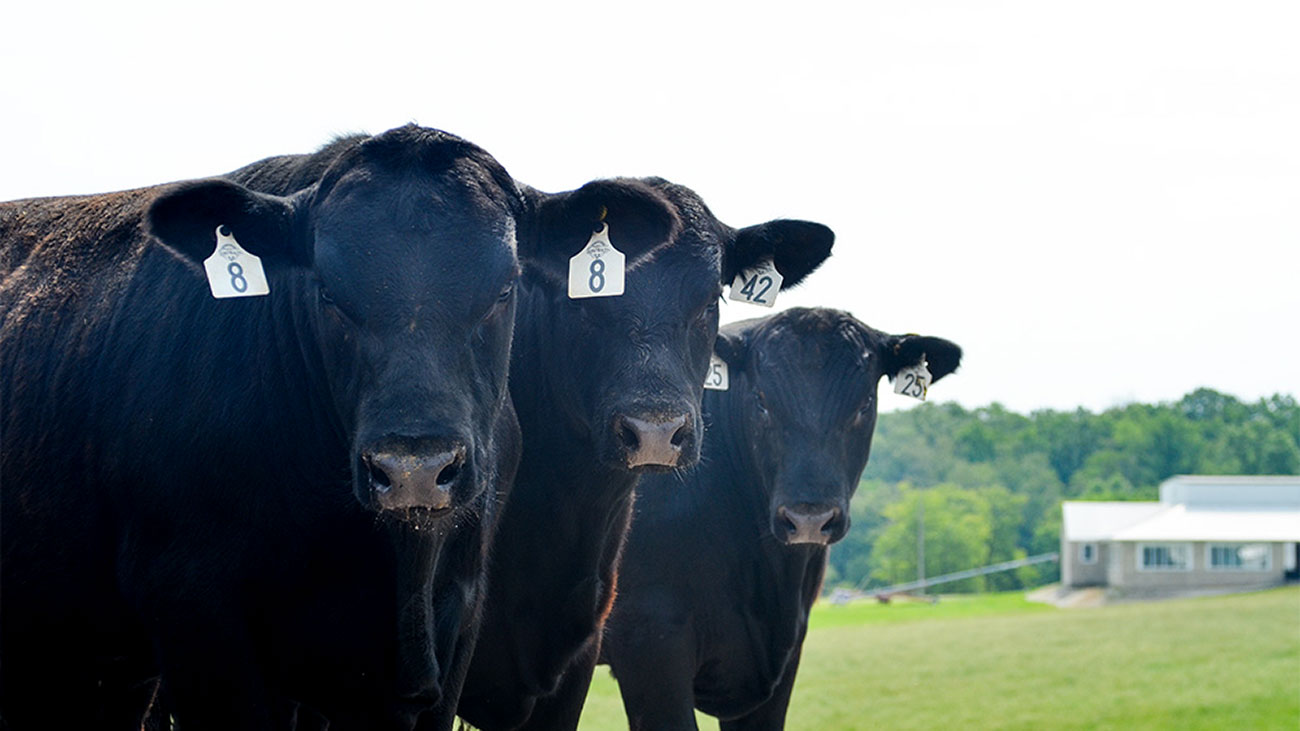Selecting Heifer Bulls
Calving ease EPDs consider multiple factors.
June 20, 2019

 It is important to select specific bulls when breeding heifers so the heifer’s first calf can be born easily. While using the birth weight (BW) expected progeny difference (EPD) for selection is popular, the calving ease EPD is more important, says Travis Olson at Ole Farms Athabasca, Alta., Canada. This is also more important than trying to assess a bull visually, judging him on how big his head is, or how thick his neck and shoulders are, he adds. There’s much more to it than that.
It is important to select specific bulls when breeding heifers so the heifer’s first calf can be born easily. While using the birth weight (BW) expected progeny difference (EPD) for selection is popular, the calving ease EPD is more important, says Travis Olson at Ole Farms Athabasca, Alta., Canada. This is also more important than trying to assess a bull visually, judging him on how big his head is, or how thick his neck and shoulders are, he adds. There’s much more to it than that.
The calving ease EPD is the most important thing to look at. Breed associations have done a good job identifying bulls and genetics that cause calving issues. Multiple factors come into play in creating a calving ease EPD, and it is a more reliable predictor of calving ease. BW EPDs, while accurate, are just an average of progeny and don’t indicate how consistent calves are for birth weight, he explains. For example, two bulls could have an average BW of 75 pounds (lb). Bull A sires calves 65 lb. to 85 lb. while bull B’s calves are 55 lb. to 95 lb. Bull B’s average birth weight looks good (75 lb.), but he has less consistent ease of calving, says Olson.
“Pay attention to calving ease EPDs, because the higher accuracy is better. Many of us are using bulls rather than [proven artificial insemination sires], so often the accuracies are a little low. If you are buying an unproven bull at a sale, look at repeatability in the pedigree. I get nervous when I see a bull whose calving ease numbers are acceptable but there are a few animals in his pedigree that weighed 95 pounds at birth,” says Olson.
“If I’m looking for a heifer bull, I try to identify how many generations of calving ease he has stacked up. If there’s at least three generations of high-calving-ease EPDs stacked up, rate of success will be better. You don’t want a calf to throw back to a great-grandsire who happened to be a cow killer, siring huge calves,” Olson notes.
With selective breeding, people can breed away from things like heavy birth weight, but these traits may still be lurking in the background and be expressed if certain genes just line up incorrectly.
“Many seedstock producers breed for power and then use a heifer bull on their heifers. They’ll state in the [sale book] that all those offspring are good for heifers, but if a bull was 86 pounds himself, out of a heifer, he won’t be a heifer bull,” says Olson.
“Many people misunderstand this because they don’t understand EPDs. They might decide to buy a bull because his birth weight was 75 pounds and the others were 80 pounds. I’d rather use an 80-pound-birth-weight bull on heifers if he was born out of a cow, than a 75-pound bull born out of a heifer. In the Angus breed there’s an average of 8 pounds difference in birth weight between a heifer’s calf and the calf she’ll have when she’s mature, from the same genetics. The mature cow will usually have a bigger calf.”
So, looking only at birth weight doesn’t give the whole picture. The calving ease EPD takes into account age and size of the cow, the history, the shape of calf, gestation and the bell curve (60 lb. vs. 120 lb.), he says. There are multiple factors involved, and this is why calving ease EPDs were developed.
“I was guilty of paying more attention to birth weight, but discovered that calving ease is a better yardstick. It takes into account inconsistent bulls that have a good average but still sire occasional big calves. If the calves vary between 60 to 75 pounds, you’ll probably be fine; but you want a bull that sires a 75-pound calf consistently, and not one that pushes up into the 90s and causes problems.”
Editor’s note: Heather Smith Thomas is a cattlewoman and freelance writer from Salmon, Idaho. [Lead photo by Kasey Brown.]
Angus Beef Bulletin EXTRA, Vol. 12 , No. 6
Topics: EPDs , Management , Selection
Publication: Angus Beef Bulletin


